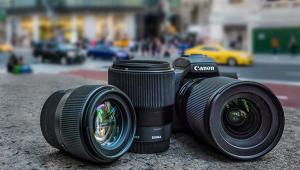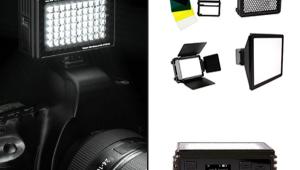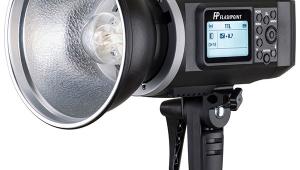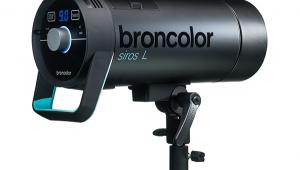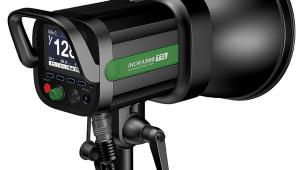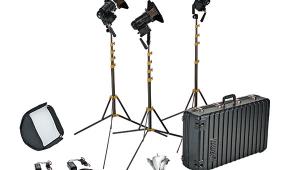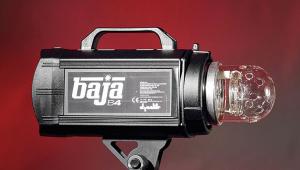Interfit’s Stellar XD 300 Monolight Kit; The Stellar Line Goes High Tech
A monolight makes entering the world of studio flash photography as painless as possible. Before long you’ll find that this studio strobe will be as easy to use as your shoe-mount flash (perhaps easier) and provide undreamt of creative possibilities. Some monolights make the transition much easier. Enter the digital Interfit Stellar XD.
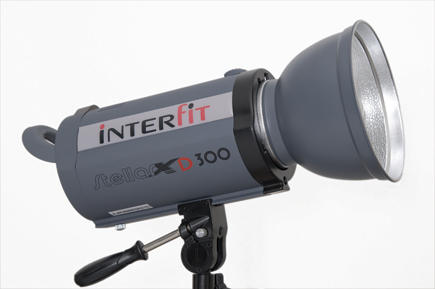 |
|
|
The Stellar XD is a member of the newly revamped Stellar family, touting the moniker “X” series, which includes the Stellar X and the battery-operated Stellar Xtreme. Under the proverbial hood they have much in common, namely microprocessor control. Functionally, what separates the XD from the rest is the digital back panel, in contrast to the conventional rotary dial and buttons found on the other models.
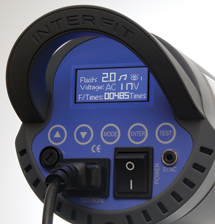 |
|
|
A Stellar Performer
I was thankful for the ruggedized aluminum housing and the obviously durable construction of the flash tube/modeling light assembly and sturdily built solid-state (and other internal) components that went into this series. And for good reason. Long story short, one of my XD heads took a spill from a short height. In trepidation, I righted the monolight and put it back to work. The light didn’t miss a beat.
Other features that show these new Stellar lights to be no-nonsense include a thermal cutoff switch and fan cooling (especially necessary when using a softbox). As an added safety feature, the square softbox that comes with the kit has heat vents (see online instructions). The vents weren’t needed with the 150w modeling lamp on the XD 300.
The X series also boasts an S-type bayonet fitting. Sometimes you want to step outside the box and play with accessories that are not ordinarily available within a product line. This feature mount makes that possible. But what if you add a particularly large softbox that might wreak havoc with balance? A sliding rail with locking knob has been added to remedy that problem. Also, the heads now feature a locking handle to control tilt (replacing the ratcheted knob). The one new feature I’m least drawn to is swiveling of the head. I prefer to lock my heads down, so that someone can’t accidentally brush against them and change lighting angles I’ve worked hard to establish.
 |
|
|
The Stellar XD Control Panel
I’ll admit there are things about the traditional analog-style dials that I like. I find it easier and faster to set output ratios on the strobe and modeling light with dials. But dial settings are often hard to read in low light. In contrast, the Stellar XD’s illuminated display panel is easily readable. Granted, the operating buttons are not illuminated (some might wish they were), but they are easy enough to read. All buttons use soft-touch
micro-switches and are positioned logically, all in a row, so there is no confusion. And with a little practice, you can even make settings guided by touch and beeps, without looking at the control panel. (Okay, I’ll admit, a remote control would have been ideal.)
The key button to start with is the Mode button in the middle. That lets you set flash output and modeling light output individually, as well as proportional flash/modeling (where the modeling lamp tracks the strobe output). Proportional tracking is useful when working with two or more lights, to see the effects from each. (Note: There is currently no off switch for the modeling lamp, but I was assured that the units are being modified with this feature added, as a result of my prodding. Updated XDs should be available when you read this.)
 |
|
|
Because the XD features auto-dumping as you set a lower flash output (to avoid an erroneous overexposed image, the flash pops to dissipate the excess accumulated charge), you don’t have to hit the Enter button—but doing so speeds things up. Even without hitting Enter, the last value input is the setting that remains in effect. And all settings remain in place after the unit is turned off, or even unplugged.

